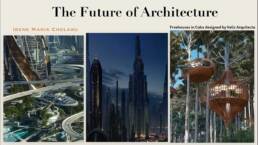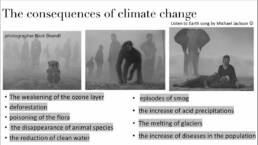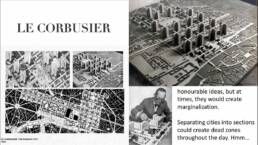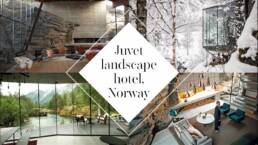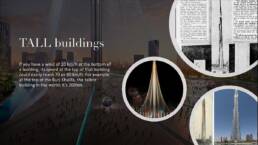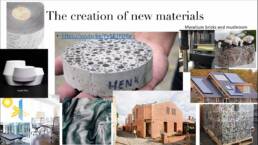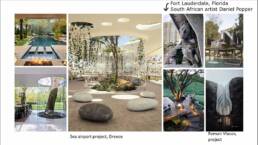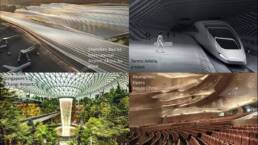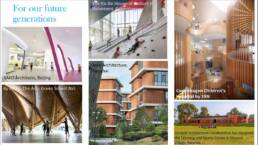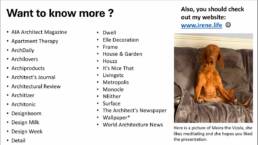Hello dear friends,
Below you will find the script from a presentation I made for my humanities class during the first semester of CEGEP, where the challenge was to delve into a topic blending both scientific and artistic elements. Naturally, I chose to explore the future of architecture, a subject close to my heart.
This presentation extended to a lively 25 minutes, surpassing the allotted time (though the class and the teacher absolutely loved it and didn’t mind). Thus, I unfortunately couldn’t delve into every detail—oh, the constraints of time! Please bear in mind that, at the time of this presentation, I was only 17 years old. As such, my taste and opinions were in their nascent stages, bound to evolve and refine with the passage of time. Furthermore, the text provided below mirrors precisely what was presented on that day. Although I can polish and rephrase it now if I wish, I would rather leave it as it is, to maintain its authenticity and candor.
I recommend taking a look at the photos I’ve added to the article as you read. They provide a visual companion to better grasp the essence of my discourse. Happy reading!
In the last few decades, many people have expressed concern about environmental degradation, yet few have taken action.
The lack of education and laws made by the government in relation to the environmental problem gives us too much power and freedom that we don’t use properly. Individual ignorance about this problem results in the excessive waste of our natural resources. The polluting emissions of companies deteriorate our sources of water, air and soil.
Soon, the consequences will worsen, and we will be left with nothing. The weakening of the ozone layer, global warming, deforestation, poisoning of the flora, the disappearance of animal species, the reduction of clean water, episodes of smog, the increase of acid precipitations, the melting of glaciers, and the increase of diseases in the population are just some of the consequences that will bring the destruction of our world. And you’re probably like “…wow Irene that’s extreme…”
But is it really? All the facts are sadly aligning in this direction and will continue to do so if nothing is done.
By the year 2050, it’s projected that 68% of the population will reside in urban areas. Cities, unprepared for this growth, face issues like congestion, crime, and a housing crisis. Now, more than ever, humanity needs to evolve sustainably to meet our needs.
Architecture plays a crucial role in this evolution. The construction industry currently contributes to 23% of air pollution, 50% of climatic change, 40% of drinking water pollution, and 50% of landfill waste. Since the age of 4, I’ve aspired to be an architect and have my own company. My goal is to incorporate new technologies and materials, contributing to a new era of architecture and making a positive impact on the world.
A quick disclaimer: The future of architecture is still uncertain, although many are making calculated guesses on the direction it could head. Today, I’ll touch briefly on this vast subject, presenting a few solutions. Keep in mind there are many more exciting solutions, this presentation’s purpose is to merely spark your interest in this dynamic field.
Now, a little bit of a sidebar, in architecture at university, I’ve heard that after the deadline of a project, the class and the teacher can often gather around and dissect that one ambitious project aspiring to be revolutionary. And you may think that this is cruel, but if you think about it, we cannot afford to oversaturate this industry any longer with nice projects that don’t have a backbone. Everything needs to be calculated and improved to the point of perfection, for utility but also for security reasons.
And this ritual my friends, we shall do! Or rather I will do it for you and you will observe 😉
Le Corbusier – we talked about him in class, had honourable ideas, but at times, they were very marginalized. Separating cities into sections could create dead zones throughout the day. If you work late, going to your office alone could be kind of dangerous in a “dead” street. Same with residential areas: during certain hours, there’s nobody on the street because all the restaurants and bars that would be open late would be in a separate section. That’s why we design cities that have a wide variety of buildings and that aren’t separated in that way – having a constant flow of activity and eyes on the streets.
Moving on. Let’s take a quickkk look at the capsule pods in Japan. Now I won’t talk too much about the policies and all the reviews because there are two parts of the spectrum. But honestly, in my personal opinion, this just makes me rather uncomfortable and claustrophobic. It also looks dystopian, lacks personality and can be a breeding ground for disease. I don’t even want to think about what a problem with ventilation could bring. And if the pods are not well isolated, you would just hear all the alarms…. And snores. And there’s always the thought, what if the door doesn’t unlock? It makes me think of a world where people would only be preoccupied with the constant cycle of work, sleep, work, sleep. It’s almost Kafkaesque, like Gregor Samsa in Metamorphosis, who turned into a bug because he was too altruistic when helping his family and ended up alienating himself. We are almost like (whisper trigger warning) *show bugs in drawers picture*. I can only begin to imagine the psychological impact builds like this would have on us.
Now, “The Line”. We already mentioned it a few classes back and watched a brief video introducing it, so I won’t show another one, for the sake of time. But let’s really look at it in more depth. At first glance, it seems like a nice idea, right? I mean, its grandiosity and mentioned features try to send across a positive, modern message… or so it seems. In fact, numerous issues arise, even without delving into ethics. From an architectural standpoint, it’s problematic. The estimated cost of 1 trillion American dollars, likely to be exceeded, raises concerns.
If the focus really is on green technology, then why does this “line”, literally cut through the middle of a natural habitat? It looks like it’s forcing its way, instead of living in harmony with its surroundings. When natural habitats are fragmented like this, species stop migrating, which can result in the extinction of the weaker species and the limitation of genetic diversity. As seen in this project, there are no wildlife corridors to let the animals pass and reach the water. And although this project is built in the desert, there are still thousands of plant species and animals like snakes, lizards, turtles, and sand cats…. Not so sustainable and eco-friendly anymore huh? Moreover, this 170 km giant mirror wall is going to significantly increase the temperature on both its sides due to the light that will be reflected. Everything around it will get fried. Not to mention the hazard of birds flying into it.
Also, organic cities are meant to grow, so is this line just going to keep on extending? Or would you start adding perpendicularly? In that case, “the Line” wouldn’t be much of a “line” anymore.
Moreover, who is going to live at the top and who will live at the bottom? Is this going to be Titanic 2.0? If there’s a catastrophe, will they simply close the entrances on each side, meaning that people can’t escape? There are also going to be some serious lateral stability issues in case of an earthquake… you can only imagine… This means that braces or outside supports will have to be installed, changing the original look of the project.
And the temperature of the desert can reach up to 55*C, so imagine how much energy will be used, considering that the top remains open at all times. And if you play with the shade, then how is all the just greenery going to grow? I mean, unless they find a way to geometrically bend sun rays, I don’t see this as being a plausible option.
Lastly, all of this is funded by an authoritarian controversial government that won’t shy away from using force if they are put in the wrong light. How will it be governed, what will happen to the already non-existent women’s rights there?
This is only just to name a few of the mannnyyy problems. All enormous sums of money should help improve the already existing infrastructure in the poorer parts of the country, instead of creating this project on the ground where a tribe of native people already live on.
Then there are the spectacular mountains of Neom which are said to host the Winter Olympics (made by the same team). They are a true beacon of creativity, but with many underlying practical problems. Can you imagine the cost it would take to make this? And the energy?! I mean, it is definitely something… But why not celebrate and make use of the nature that we already have around us instead? In a deteriorating world, does it really make sense to create artificial nature, when we have such beautiful flora that we should protect?
I am very glad that so many critics are emerging and that this project’s true intentions are not brushed off into ignorance. Tens of articles, at least, are published on popular sites like Dezeen, with their critics.
So you’re probably thinking, ok Irene, so what do you think should be done then? Well I’m glad you asked, ehem hahah
You may remember the shortly mentioned movie: Ex Machina, when we were talking about Artificial intelligence. On top of its complexity, did you know that the setting was an actual real place, more precisely, a hotel called Juvet Landscape in Norway? The architects made very minimal interventions to the site, making it overall very sustainable and symbolic. For example, look at this wall, this giant rock, rather than being removed, it was integrated into the room, and the window was “placed” around it.
This all reminds me of the house in Pennsylvania, That Frank Lloyd Wright designed, which had the same philosophy; coexisting in nature, building around it instead of fighting it.
Now let’s talk about tallll buildings. If you have a wind of 10 km/h hitting the bottom of a building, the top of that building could easily receive 70 or 80 km of wind power. For example, at the top of the Burj Kalifa, the tallest building in the world, it’s 200km of wind power. This is where torque comes in – outside bracing could be a solution. We could also implement Frank Lloyd Wright’s concept of the mile-high tower, making a building denser at the bottom, and then it tapers at the top. But the problem with this is that you need to make the bottom so big in order to get a smaller top which. Dropping so much mass would not be very economical. But there’s one new solution, implemented in Calatrava in Dubai, which is going to be the tallest tower in the world. Instead of bracing it, they’ve got cables attached around the building to hold it when it sways. Which not only magnificently holds up the tower, but it’s also quite the sight.
An important kind of architecture that should be used more often is haptic architecture. It is well represented in the movie Inception. For example, a businessman notices that he is in a dream because the rug he knows doesn’t have the same usual texture he is familiar with, although the rest of the room looks the same. Throughout the movie, you’re constantly reminded that dreams are not all about the visuals but also about the feelings. When we sleep, our brains work more holistically, activating neutrons for smell, touch, and sound, and this is why we are able to recreate impossible environments so quickly.
So haptic architecture is meant to be felt through the five senses by using natural materials or textures or by manipulating light or nature. By doing this, our experience of a place becomes stronger, and you feel like it can become a part of you.
Another example:
The “Blame!” Manga barely has any dialogue, but since the author went to Parsons, he knew exactly how to set the mood. We can feel the same things that the main character is feeling just by looking at the architecture surrounding him.
Now something very exciting is the creation of new materials. Here I will show you a few practical and eco-friendly ideas. (Show pics)
- the use of bio concrete that heals its own cracks
- Organic fabric made from banana peels green rooftops
- Newspaper wood
- Mycellium bricks
- Bricks made from cigarette butts
- Mushroom glue for cement
- Banana fabric
- Smarter windows power up with nanotechnology
- Coolest White: A Painting to Reduce the Urban Heat Islands by 12%
- Solar panels ( they have been around for a while but are still important to show).
Ok now, I want to show you a few excellent examples that should be closely analyzed and followed by future architects, in my opinion. (It’s better to look at the pictures in the article in order to get a better understanding of what I’m talking about)
- the Arc, green school in Indonesia
- Singapore green airport
- Family box, Sako architects China Beijing
- Interesting photos of projects yet to be made (pictures)
- The Ku.Be House of Culture in Movement, Copenhagen
- Benesse art site Naoshima
- Teshima art museum
- Sea airport in Greece
- Fort Lauderdale, Florida South African artist Daniel Popper
- Shenzhen Bao’an International Airport, China, by RSHP
- Guangzhou Opera House China
- Copenhagen Children’s Hospital by 3XN
- General Architecture Collaborative has designed the Learning and Sports
- Centre in Masoro Village, Rwanda.
In essence, I believe that to ensure the prosperity of the future of architecture, it is crucial to conserve and protect what we already have, especially the traditional buildings and temples – The builds that define our cultures and helped shape us into what we are today. We do not, and frankly, cannot be perfect. But It is important to try everything possible in order to live in harmony with the nature that surrounds us. It’s what gave us life, and with or without us, it will prevail, even if we aren’t there anymore at some point.
A few examples of places we must preserve are:
- Puglia, Italy
- St. Peter’s Basilica, Vatican
- Machu Picchu, Peru
- Temple “Chureito Pagoda“, close to Mount Fuji
Thank you and I hope you enjoyed it!!! I know I certainly did.
